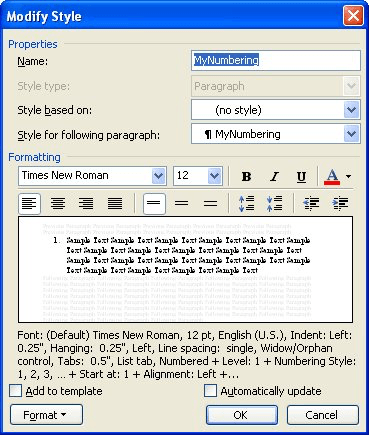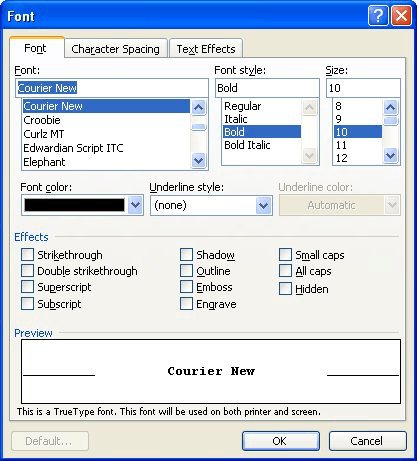Please Note: This article is written for users of the following Microsoft Word versions: 97, 2000, 2002, and 2003. If you are using a later version (Word 2007 or later), this tip may not work for you. For a version of this tip written specifically for later versions of Word, click here: Hyperlink Formatting.
Written by Allen Wyatt (last updated March 19, 2022)
This tip applies to Word 97, 2000, 2002, and 2003
By default, Word recognizes network and hyperlink addresses and formats them much as you would see them appear on a Web page. Normally, this means that the text shows up as blue and underlined. Word provides the ability for you to change the way in which hyperlinks are formatted throughout your document. This is because default formatting for hyperlinks is done using a defined character style. To change the formatting of your hyperlinks, follow these steps if you are using Word 2002 or Word 2003:

Figure 1. The Modify Style dialog box.

Figure 2. The Font dialog box.
If you are using Word 97 or Word 2003, follow these steps:
WordTips is your source for cost-effective Microsoft Word training. (Microsoft Word is the most popular word processing software in the world.) This tip (1728) applies to Microsoft Word 97, 2000, 2002, and 2003. You can find a version of this tip for the ribbon interface of Word (Word 2007 and later) here: Hyperlink Formatting.

Do More in Less Time! An easy-to-understand guide to the more advanced features available in the Microsoft 365 version of Word. Enhance the quality of your documents and boost productivity in any field with this in-depth resource. Complete your Word-related tasks more efficiently as you unlock lesser-known tools and learn to quickly access the features you need. Check out Microsoft 365 Word For Professionals For Dummies today!
When you upgrade from one version of Word to another, you may be surprised to find that your documents, all of a sudden, ...
Discover MoreHow to create signature lines in a Word document.
Discover MoreWord allows you to easily insert the contents of one document into another. Doing so, however, may result in unintended ...
Discover MoreFREE SERVICE: Get tips like this every week in WordTips, a free productivity newsletter. Enter your address and click "Subscribe."
There are currently no comments for this tip. (Be the first to leave your comment—just use the simple form above!)
Got a version of Word that uses the menu interface (Word 97, Word 2000, Word 2002, or Word 2003)? This site is for you! If you use a later version of Word, visit our WordTips site focusing on the ribbon interface.
Visit the WordTips channel on YouTube
FREE SERVICE: Get tips like this every week in WordTips, a free productivity newsletter. Enter your address and click "Subscribe."
Copyright © 2026 Sharon Parq Associates, Inc.
Comments